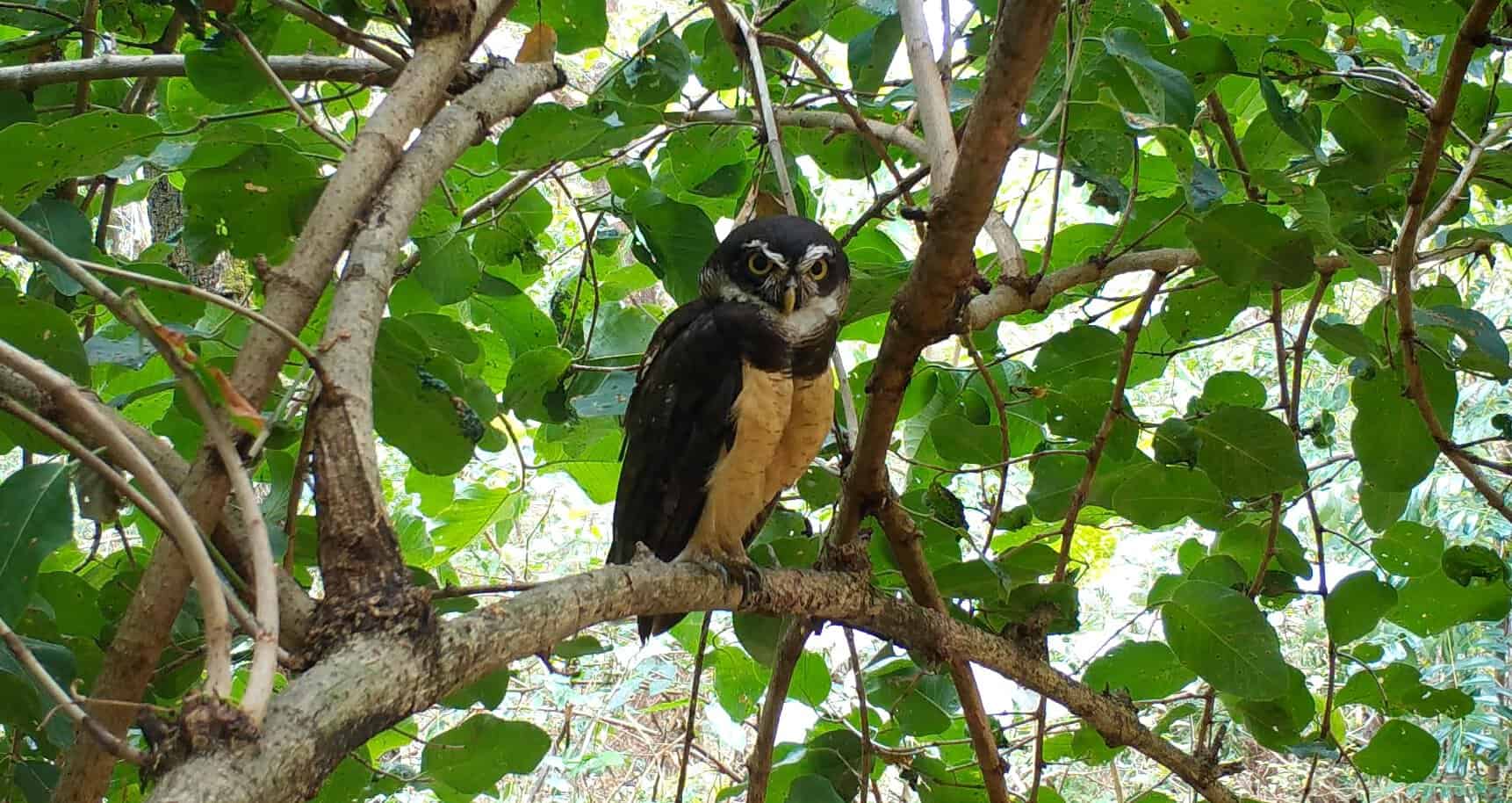I’m a sucker for birds of prey. Any time I happen upon a hawk, kite, falcon, or eagle while hiking to review camera traps, I’ll take a moment to observe and appreciate it. For me, owls are even more of a delight to encounter, probably because I see them so infrequently. Today we discuss my favorite species of owl to happen upon in the field, the spectacled owl.
The spectacled owl (Pulsatrix perspicillata) is known as the buho de anteojos or oropopo in Spanish. Buho de anteojos is a direct translation of the English name, and I’ve heard it used before, but I prefer oropopo both because it’s used more frequently among laymen and because it’s much more fun to say.
These owls are large and powerful. They average is around 19 inches tall and weighs about 2 pounds, with females being slightly larger than males. They have dark brown heads with white lines around their big yellow eyes that give them their spectacled name. Their wings are dark brown, and their bellies are a creamy-tan. Like many species of owls, the expression on their faces when they look at you seems to express utter disdain for your presence.
Spectacled owls have a huge range stretching from southern Mexico down to Argentina. In Costa Rica, they can be found throughout the entirety of the country, save for the highest points of elevation. They require dense, mature forest for roosting and nesting, but can be found along forest edges, in clearings, and semi-open savannas while hunting.
Though they occasionally hunt during daylight hours, spectacled owls are largely nocturnal, beginning to hunt as the sunlight fades at dusk. While hunting, they often perch on bare branches and scan the area below for prey. Once a suitable prey item is detected, they quickly pounce, grabbing their soon-to-be-meal with their powerful talons. They eat a variety of creatures including large insects, lizards, frogs, birds, rodents, and larger species of mammals like opossums, skunks, agoutis, and even sloths.
Spectacled owls are my favorite species of owl. I like how big they are, and I love how angry they look. I’ve had the good fortune of having many interactions with this species over the years. I was able to spend as much time as I wanted with a spectacled owl that lived at the rescue center where I worked for a few years. I would happily stare at it while it looked back at me with obvious disapproval. I see them more frequently in the wild than any other species of owl. I’ve learned to look for them hiding out in the shade of papaturro trees during dry season in Guanacaste.
I’ve recorded them a few times at dry season waterholes, taking a much-needed drink just like all of the other species. Once, I found a spot in the branches of a papaturro tree where one individual was spending its days. I wiggled my way up to the exact branch it was sitting on and placed a camera trap. The results were the best spectacled owl videos I’ve ever recorded. I’m happy to share them with you in the video below.
About the Author
Vincent Losasso, founder of Guanacaste Wildlife Monitoring, is a biologist who works with camera traps throughout Costa Rica. Learn more about his projects on facebook or instagram. You can also email him at: vincent@guanacastewildlifemonitoring.com

